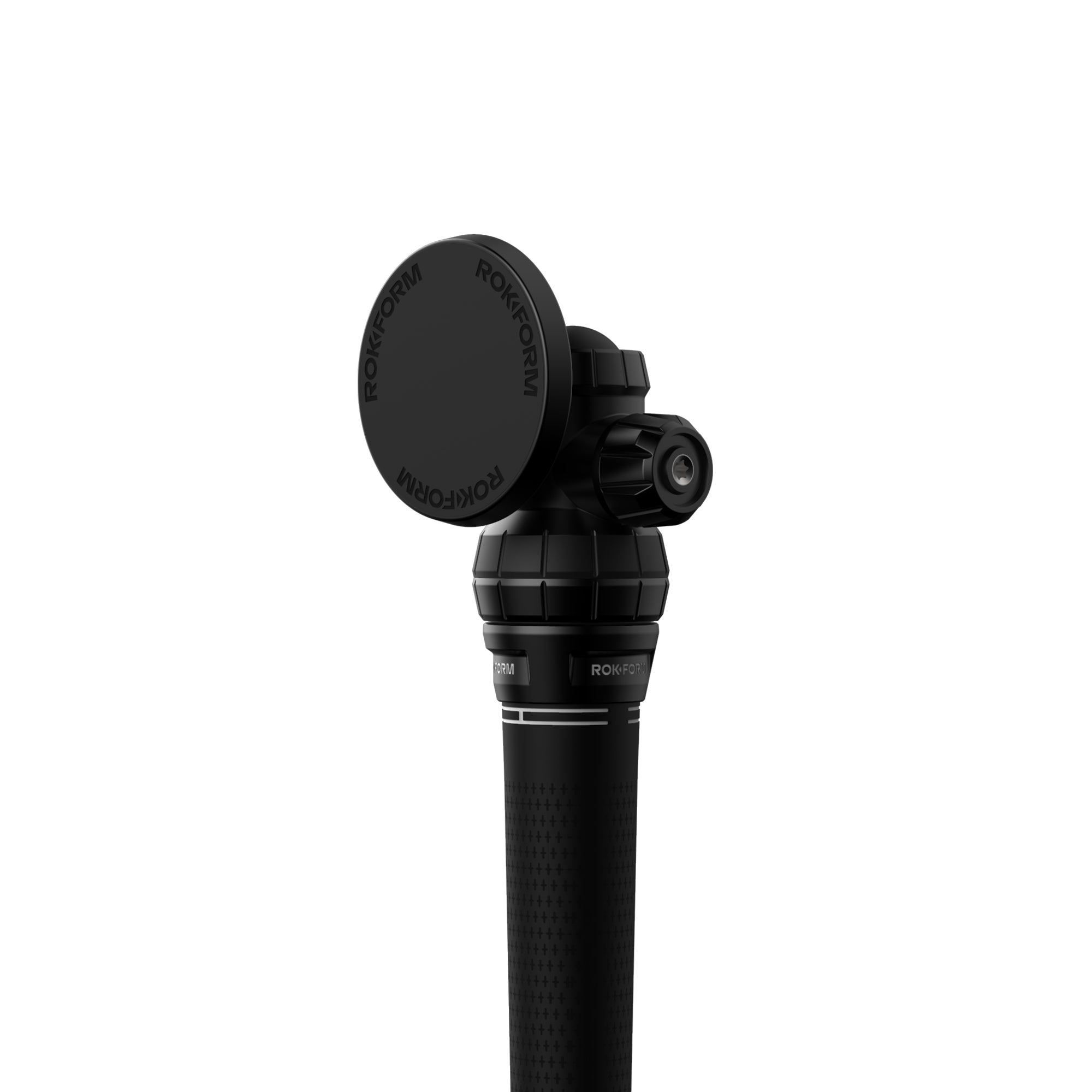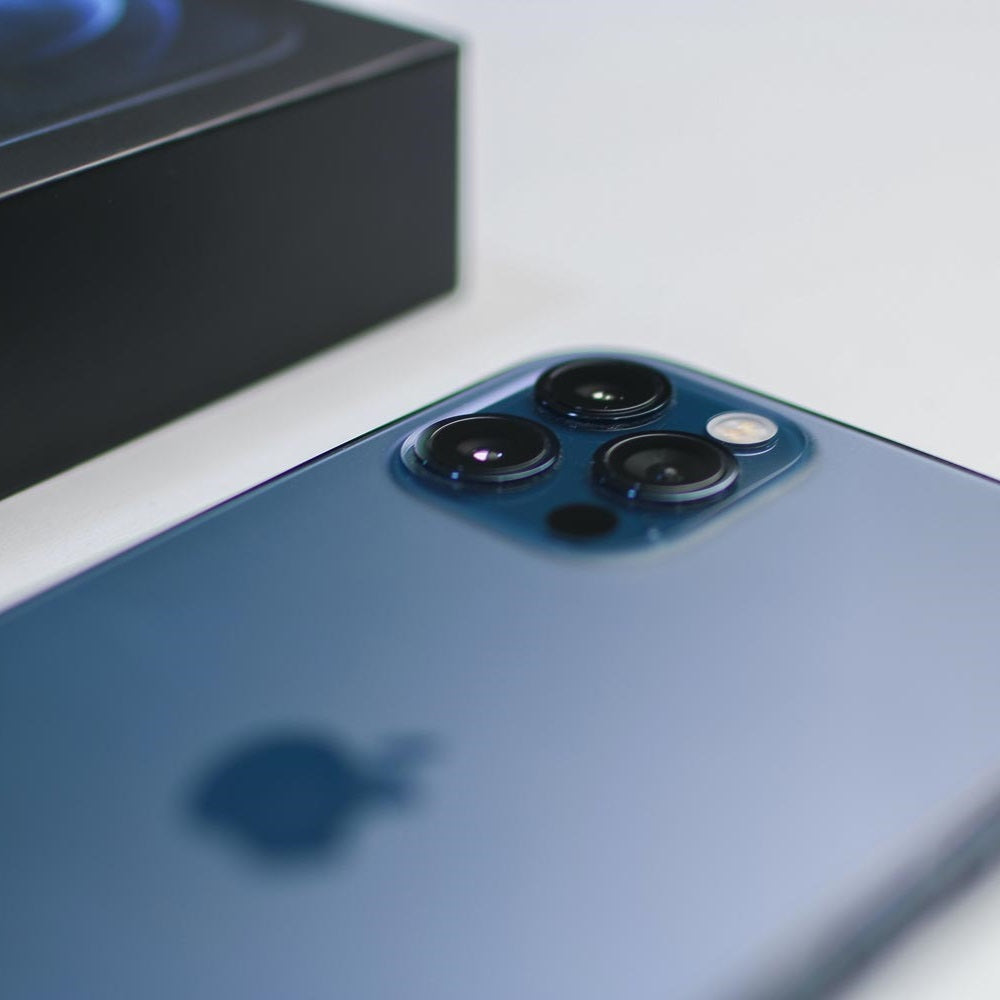If you’ve ever found yourself wondering, “what is a military grade phone case?,” you’re not alone in that venture. Although you may have heard the term tossed around, it’s likely that you may not know the meaning and standards behind “military-grade.” And that’s okay.
At Rokform, we offer some of the best cell phone cases for drop protection out there (so we definitely understand military drop test standards). In this post, we’re going to explain exactly what military-grade toughness stands for, letting you know how impact protection is measured. We’ll go over what MIL-STD-810G from the US Department of Defense is all about. Let’s get started:

Understanding Military Standards
We live in a world where pretty much everyone has a cell phone these days. In fact, according to study back in 2021, around 37% of households planned to buy a smartphone. Of that, 96% were repeat purchasers. That said, protection matters. And not just any kind of protection, but the kind you can count on. So when asking, what is a military grade phone case, you have to understand just what the military drop test standard is. These standards are set by the US Department of Defense and are called MIL-STD-810G. This whole set of rules includes 29 test methods designed to stress-test equipment in all sorts of ways. Extreme heat that would bake your brains, humidity thick enough to swim in, vibrations that would rattle your teeth, and of course, shock resistance for those unexpected drops. The kicker here is they don't just run these tests once. They do it over and over to make sure the gear can consistently handle the abuse. Indubitably, they’ve got to earn that “military-grade” label. And that's the kind of standard we're talking about here at Rokform.

The Evolution of MIL-STD-810G
From Tanks to Smartphones
Think about it for a minute. We've gone from tanks to smartphones using similar durability principles. This blending of military and civilian tech is pretty wild. They even have a term for it in civilian use: "spin-off." GPS, the internet, even your microwave oven - all started with military applications and then made their way into our homes. And now, phone cases are the latest in this tech crossover. It's like when they took the Humvee, a vehicle built for the battlefield, and turned it into the Hummer H1 for the everyday driver. That's the kind of transition we're seeing with this"military grade" stuff.

The Psychological Appeal
When it comes to military drop test standards these days, there’s definitely a mental aspect to all of it as well. It taps into this deep-seated desire we have to feel secure. This is especially true when we live in a world where smartphones just happen to be so fragile. When you see that label, you automatically associate it with top-notch quality, something that can handle whatever life throws at it. And let's be honest, that perception can come with a higher price tag. But the thing is, the term isn’t really regulated. That means that some companies may try to use it loosely. This is why it’s absolutely vital to look past buzzwords and understand the actual standards and testing involved.
If you want to see a true head-to-head of military-grade action, check out our Rokform vs OtterBox comparison.
Decoding the Drop Test

The 26 Drops Challenge
Forget those wimpy single-drop tests you might see out there. When you're talking about true military drop test standards, they take things to a whole other level with what's often called the 26 drops challenge. It’s far from conventional testing. It isn’t just one accidental drop. Basically, it’s a full-on assault from every possible angle.
They're dropping the device or case on each face, every single edge, and all the corners. It's a systematic beatdown designed to expose weaknesses. And after each and every one of those 26 drops, they're inspecting the device for damage and making sure it still works. But they don't stop there. To really ensure the results are solid, they typically run this entire gauntlet not just once, but three times.
The table below shows different drop test parameters and which military drop standard goes along with that test:
Drop Test Parameters |
MIL-STD-810G |
MIL-STD-810H |
Surface |
Plywood |
Steel |
Height |
4 feet |
5 feet |
Number of Drops |
26 |
26 |
Backing |
Concrete |
Concrete |
The Role of Surfaces
When they're putting these cases through the military drop test standard, they're not just using one type of surface. They mix it up with concrete, steel, and even water. Honestly, dropping your phone on rough concrete is a totally different impact than it hitting a hard steel surface.
Each of these surfaces tests different aspects of how well the case can protect your device. Concrete is great for seeing how the case absorbs the overall shock of a fall. And when they introduce water into the equation, they're checking for ingress protection (ours is rated IP67, giving you dust-tight protection and temporary protection from submersion in water). Ingress protection judges how well the case keeps liquids out and prevents damage. In our case, (IP67), the 6 indicates complete dust protection. And the 7 tells you how protective we are from temporary splashes.
To see what we’re made of, check out this YouTube on insane drop tests where our very own Rokform Rugged Case for the iPhone 13 Max Pro was tested and delivered awesome results!
Beyond Drop Protection

Thermal Resilience
The Insulation Challenge
The challenge here is managing the heat your phone generates itself. Creating a case that insulates without trapping that internal heat requires some smart engineering. You'll often see multi-layered designs and the use of advanced materials that can help dissipate heat. Importantly, the concept of using advanced insulation like aerogel to protect phones from extreme cold is definitely out there. Aerogel is known for its incredible insulating properties, even in very thin layers.

Electromagnetic Interference (EMI) Shielding
The Double-Edged Sword of EMI Protection
At Rokform, we know all about magnets and phones, including why our neodymium magnets are completely safe to use. However, when it comes to EMI shielding your devices, this could potentially interfere with wireless signals. It's a double-edged sword. If you completely encase your phone in metal, it's going to have a hard time connecting to cellular, Wi-Fi, and Bluetooth networks. So, the engineers have to get clever. They might use selective shielding that targets specific problematic frequencies while allowing the signals you need to pass through. You might even see designs with "windows" made of non-conductive materials strategically placed around the antenna areas of the phone. Some advanced designs even use tuned resonators to help enhance the desired signals while still providing that crucial EMI protection.
The Environmental Impact
Longevity vs. Recyclability
The Biodegradability Conundrum
And then you get into the whole biodegradability question. Imagine a military grade phone case that could not only survive a beating but also break down safely after you're done with it. That's a serious challenge. The materials need to be tough enough to protect your phone through all sorts of abuse but also capable of degrading in a controlled way once they hit the landfill. Some companies are experimenting with bio-based polymers for parts of the cases, but making sure these materials can hold up to the demands of a "military grade" standard throughout the product's life, and then break down properly afterward, is a challenge that must be solved.
While you’re here, check out our guide to the ultimate protection for your iPhone 16.

The Future of Military-Grade Protection
Smart Materials and Adaptive Protection
Self-Healing Surfaces
Then there's self-healing surfaces. Forget those annoying little scratches and dents that accumulate over time. We're talking about materials that can automatically repair minor damage. This could involve microcapsules embedded in the case material that rupture upon damage and release a healing agent, or even polymers that can reform their molecular bonds when exposed to light or heat. This self-healing capability could eventually extend beyond just the surface, potentially allowing the case to maintain its structural integrity for much longer.
The Unsung Heroes: Materials Science
Composite Marvels
So, when you look at our approach to building seriously tough phone cases, material science is at the forefront. Seriously - we don’t just throw any old plastic together. Our Rugged Cases come with dual-layer construction. You've got a tough outer shell made from polycarbonate, the same impact-resistant material used in things like police armor. This gives you that solid, hard protection against drops and impacts.
But of course, we don’t stop at that. We also include a softer, more flexible inner layer made from TPU (Thermoplastic Polyurethane). This TPU acts as a shock absorber, cushioning your phone during those unexpected drops. It’s this combo effect that allows our Rokform cases to exceed military drop standards. We’re focused on balance of strength, lightweight design, and a good grip.
While materials like carbon fiber and Kevlar offer incredible strength-to-weight ratios and heat resistance, and nano-composites enhance things like scratch resistance, at Rokform we strategically use high-grade polycarbonate and TPU to deliver military grade protection you can count on.
To check out how other cases' materials stack up to ours, see our showdown Rokform vs UAG!

Nano-engineered Surfaces
Then you’ve got nano-engineered surfaces. Some cases are incorporating these incredibly thin coatings that can do some pretty amazing things. Hydrophobic coatings can make water bead right off the surface, achieving contact angles of over 150 degrees. Oleophobic treatments repel oils from your fingerprints, keeping your case cleaner. In fact, when it comes to camera lens protectors, ours have oleophobic coatings that you can count on.
Below, we’ve provided a table showing nano-coatings and their advantages:
Nano-coating Type |
Benefits |
Typical Applications |
Hydrophobic |
Water repellent, Easy to clean |
Outdoor-focused cases |
Oleophobic |
Fingerprint resistant |
Touchscreen protectors |
Anti-microbial |
Reduces bacterial growth |
Healthcare environments |
Self-healing |
Repairs minor scratches |
High-end luxury cases |
Thermal-regulating |
Maintains optimal device temperature |
Gaming phone cases |
The Human Factor in Testing
Ergonomics vs. Protection
Tactile Feedback Engineering
Designers have to think about how these protective layers affect the tactile feedback. You still need to be able to feel the buttons click and have your touchscreen respond accurately, even through the extra layers of protection. They test button mechanisms across different temperatures to ensure they always have that consistent feel. Capacitive touch sensors are carefully calibrated to work flawlessly through the case. Some even incorporate haptic feedback to make up for any reduced tactile sensation.
Field Testing Beyond the Lab
But the lab is only part of the story. To really see how these cases hold up, you've got to take them out into the world. For military drop test standards, field testing in extreme environments like the freezing cold and the hot-hot heat, dusty and soaking wet give priceless data that you just can’t replicate in a controlled setting. These tests can last for weeks or even months, with data loggers tracking environmental factors and how the device performs. And the feedback from the people actually using these cases in these harsh conditions often leads to important design tweaks.
For field tests based on true stories of real-life users, check out our collection of Rokform Survival Stories! Trust us, you’ll be glad you did.
The Ethical Dimensions
Dual-Use Technology Concerns
Privacy Implications
So, think about this for a minute. If a phone case has advanced shielding, could that unintentionally interfere with law enforcement in specific situations? Could an ultra-durable case, in a worst-case scenario, be repurposed for something it wasn't intended for? Honestly, if cases were to get smarter with integrated tech, then we would need to be mindful of the data they might collect. Could a case inadvertently create a unique electromagnetic signature for the user? If a case has logging features for impact detection, could that data be vulnerable? And if it connects to the cloud, who has access to that information? These are important conversations to have.
Accessibility and Inclusivity
Universal Design Challenges
Creating a truly versatile solution in military grade protection requires some serious ingenuity. Modular designs that allow users to customize their case based on their specific needs or the situation they're in are one way to tackle this. And the ongoing research into things like shape-shifting materials could eventually lead to cases that adapt their form for optimal ergonomics. Here at Rokform, our Rugged Case collection is built with this in mind, aiming to provide that top-tier military grade standards while still being ready for whatever.
Why Impact Protection Ratings Matter
So, while achieving that military drop test standard badge of honor involves surviving a brutal series of specific tests, the broader field of impact protection measurement looks at things a bit more granularly. Think about it this way - manufacturers will often conduct their own internal testing, going beyond the strict military specs to understand the nuances of their case designs. This involves carefully controlled drop tests from various heights onto different surfaces (as we mentioned earlier).
The key here is measurement. After each impact, engineers meticulously assess the damage to both the case and the phone itself. They're looking for cracks, dents, and any functional issues. Some might even use high-speed cameras to analyze exactly how the case absorbs and dissipates the force of the impact.
These internal tests help them fine-tune their designs and understand the limits of their protection. So, while "military grade" gives you a strong benchmark, the science of measuring impact protection through an ongoing process of testing, analyzing, and therefore, improving.
Learnings Recap
So have we learned, what is a military grade phone case? Indubitably, we have. Military grade phone cases are built on a foundation of serious science and hardcore testing. All this is in effort to meet military drop standards from the US Department of Defense to deliver that next-level toughness we all know and love. These cases are engineered to handle the extremes with the brains behind them being material scientists that are constantly pushing the envelope.
It’s a different breed of protection, no doubt. If you’re the type who demands gear that can keep up with your adventures, the kind that’s built to a higher standard, you already know what’s up. At Rokform , we speak this language with some of the toughest cases out there. Don’t believe us? Then check out what three expert reviewers have to say about how well our cases withstand drops and dust with premium materials. Or just hear from Zoe who was 75 feet up on a cell phone tower when her phone fell out of her pocket and Rokform saved the day.







